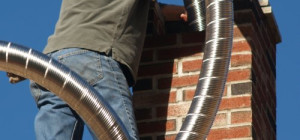 Whether you are young or old, athletic or sedentary, cycling is a fun and healthy way to travel and experience the surroundings. Practicing vigorously gives the heart and circulation a workout and can burn more than 500 calories an hour. The development of new kinds of bikes – especially the hybrid, which combines the speed of a road bike and the strength of a mountain bike – makes cycling easier and offers more options to meet your specific needs. What’s more, cyclists now have more places to run.
Whether you are young or old, athletic or sedentary, cycling is a fun and healthy way to travel and experience the surroundings. Practicing vigorously gives the heart and circulation a workout and can burn more than 500 calories an hour. The development of new kinds of bikes – especially the hybrid, which combines the speed of a road bike and the strength of a mountain bike – makes cycling easier and offers more options to meet your specific needs. What’s more, cyclists now have more places to run.
This article will show you ways to improve your workout, safety, and comfort when riding a bike.
1- Bring a helmet.
Each year, more than 6,000 cyclists seek emergency care for head injuries, and cases of head injury represent 75% of fatal cycling victims. Used correctly, helmets are effective in 90% of cases in preventing brain injuries. Choose a helmet that suits you well and meets safety standards. Choose a striking color and a helmet that you can put comfortably.
2- Make sure the bike is tailored to suit you.
Are you going to buy a new bicycle? To know the size of the bike that is right for your body, straddle and stand on your feet to measure it. On a road bike, there should be 2 or 5 centimeters of space between the groin and the bike tube. On a mountain bike, space should be at least 5 centimeters. The handlebars should be about 2 centimeters below the seat. Buy the bike in a place with a good reputation and help you make the right decision when buying it.
3- Choose the appropriate seat.
Hard, narrow seats on racing bikes can be particularly uncomfortable for women, who tend to want a larger seating space. There are special mounts that are custom designed and are easier to install. Gel-filled saddles or leather pads can help relieve pressure and friction.
Position the seat so that your knee is slightly bent at each rotation. If it folds too much, it means that the seat is too low; If the knee locks when extended or you have to stretch to reach the pedal, the seat is too high.
4- Start slowly
If you’re not in shape, the best way to start is slowly. Pedal only about 30 minutes a day on the level ground for the first 3-4 weeks. Gradually, you can increase the intensity and terrain to ride on, adding slopes for better training. In addition, share the experience and fun with others. Group biking can make the distance seem shorter and motivate you to be a better cyclist.
5- Dress comfortably.
If you ride a bike often, consider wearing a pair of shorts. For better performance, wear pants that have no seams and allow perspiration. If you use automatic pedals, you will need to wear special footwear with clamps on the soleplate, they attach to the pedal mechanism, holding the shoes in place. It may be a bit difficult to get used to but it helps you to pedal more powerfully and efficiently.
6- It is visible when it is getting dark.
Avoid riding a bike at night. Most bicycle accidents occur at night hours. If you want to ride a bike in low light conditions, dress in bright colors, wear reflective clothing and put a reflective sign on your helmet and bicycle. Also, install a powerful light to make it more visible.
7- Always use your senses on the road.
If you go on a bike with traffic, point your sense to cars and pedestrians, use your hands to signal and obey the signals.
Communicate with drivers. That means using your hands to signal when you’re touring, staying out of drivers’ blind spots and having eye contact with drivers at intersections so they know your intentions and you’re sure they’ve seen you. Do not run next to another cyclist. Look at the doors of cars that can be opened, holes in the ground or other obstacles that may arise.
8- Be understanding with the traffic
If you are in the middle of traffic, in a narrow street or on a winding road, go in the car lane, not next door where you are not so visible and you can be thrown to the side. Of course, if a car wants to go, get out of your way. When you think that you are going to encounter traffic it is advisable to add a rearview mirror to the handlebar.
9- Use your best way to brake.
To experience optimum pressure, brake with your hands. If you want a quick stop, press the brakes firmly and position yourself on the back of the saddle. This will keep the back of the bike in place so you do not tip over. In general, do not squeeze the brakes too hard, and do not press the front brakes first. Instead, press firm touches on both brakes.
10- Select the gear.
You do not have to pedal in a high gear for a long period of time, this can increase the pressure on your knees. Shifts to shorter, more revving gears for more exercise with less stress on your knees. The best thing for cyclists is 60-80 revolutions per minute.
11- Help your muscles.
After your bir, a slope with the bicycle, do not go down the slope without pedaling. The reason? When you climb the slope, lactic acid builds up in your muscles and can contribute to muscle pain. If you pedal smoothly but steady while lowering you can help eliminate lactic acid.
12- Change positions.
It varies the position of your hands and body frequently. That changes the angle of your back, neck, and arms so that the muscles are stressed and the pressure is put on different nerves. Avoid riding with your hands on the curved side of the handlebar for a long period of time. This can cause cramps in your hands, shoulders, and neck. Keep your arms relaxed and your elbows not blocked. This will help you with bumps.
Following these tips will improve your riding experience. Would you add any more?







